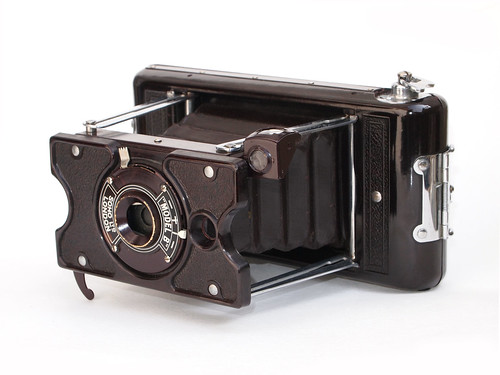 |
| Soho Cadet Model B |
The materials that cameras have been made from has evolved to suit the technology of image production as it has developed historically. The first cameras were hand built largely from wood, with relatively small volumes of production. With increasing popularity and ease of use, other materials were needed: cardboard for cameras like the cheap Kodak Brownies, metal for smaller, more precise formats which could be cast and machined and produced in greater numbers. Plastic first appeared as a material for camera production in the 1920s (although celluloid was already in use as a base for photographic emulsion itself in the earliest flexible films); notably with the
Rajar No. 6, a
Bakelite strut-folder made in 1929. Of the early plastics, Bakelite was well suited to camera construction, being easy to mould but hard and rigid once set, and can be drilled and cut. The Rajar No. 6 produced a number of imitators in the 1930s, and, as a material, Bakelite seems to embody Art Deco modernity. However, as other plastics were developed better suited to the task, Bakelite quickly fell out of use for camera bodies, as well as for many other purposes.
The Rajar camera was made by
APM which had been formed by the merger of a number of companies largely concerned with the manufacture of film, plates and paper; APM was later split into APEM to continue this line, while cameras were made by
Soho. The
Soho Cadet Model B clearly owes much of its design to the Rajar No. 6, although it was ultimately derived from the Soho Cadet, a more traditional medium format folding-bed camera from 1930. The
Early Photography website dates the Model B to 1931 (other sites give a date of c.1935); the camera itself does not use the name Cadet anywhere, marked simply "Model B" above the lens, but the front and back body sections (as well as some of the metal fixings) appear to be
almost the same as those used in the original Cadet: a small amount of alteration may have been made to the Cadet mouldings for the Model B. Instead of the folding bed, the Model B is a strut-folding version with a lens panel not dissimilar to the Rajar No. 6. The back section of the body removes entirely for loading; inside the back is the statement: "Takes any standard film 2 1/4 x 3 1/4 inches or 6x9cms" with the same patent number as that inside the original Cadet (however,
Red Bellows describes the Model B as having a different patent number inside). Incidentally, the Rajar camera uses medium format film, but with Rajar's own propriety spool, possibly making the description 'standard film' more apposite than it might at first seem. Frame advance is by red window and there is no pressure plate, which may affect film flatness. Some of the metal parts, such as the two pivoting stands for horizontal and vertical orientation are painted deep maroon to match the Bakelite body and front, the bellows also being maroon too; the remaining metal components are very brightly chromed.
 |
| Soho Cadet Model B opened for loading |
The Model B has a fixed-focus lens unlike the original Cadet, which could be focussed by the position of the lens panel on the rails of the folding bed. The Cadet was also provided with a (limited) range of shutter and lens options; like the basic Cadet, the Model B has a meniscus lens in an everset shutter with 'I' for Instant and 'B' for Bulb: in bulb mode the shutter fires with the shutter lever tripped in both directions. Although not measured, I estimate that the shutter fires at about 1/40th - and it can sometimes be a little sluggish when the shutter lever is pressed in the down direction: it seems that gravity works against it when held in certain ways. From my rough measurements, the camera has a focal length of around 100mm, making the aperture about f14.
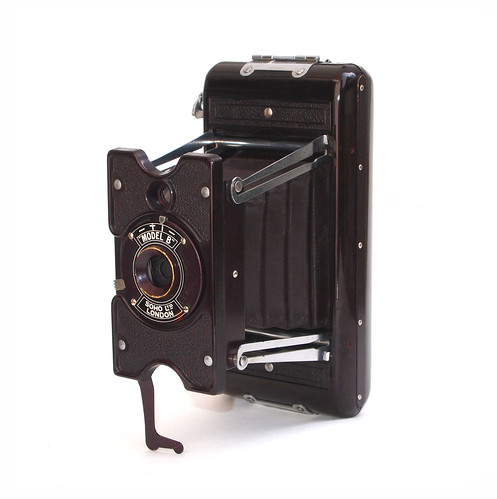 |
| Soho Cadet Model B with vertical stand |
My example of the Model B came in a job lot of cameras, and may have been the least interesting of them, but I did want to try it with film. I shot a couple of rolls of Fomapan 200, possibly a stop or two too fast for conditions with bright sunlight, the latitude of the film coped with this well enough. The camera uses a brilliant finder, but one of the smallest I've used, making it difficult to compose a shot. Held vertically, the finder is located directly above the lens behind the lens board, but pivots out through 90 degrees for horizontal shots. The results show all the shortcomings one might expect from a simple meniscus lens: vignetting, astigmatism, barrel distortion, and coma - as well as what appears to be some internal reflection.
 |
| Soho Cadet Model B with Fomapan 200 |
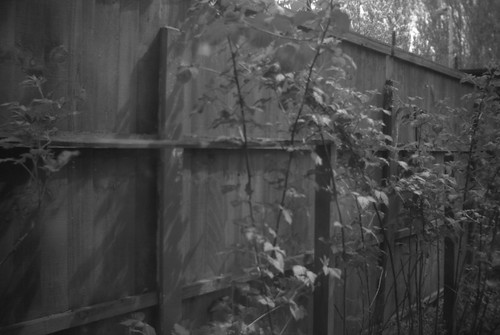 |
| Soho Cadet Model B with Fomapan 200 |
Interestingly, the lens' curvature of field aberration means that at the very edges of the frame near objects are more in focus: in the image above, the oblique fence recedes away from the lens into focus at the right - but at far left is also in focus. This effect can also seen in the image below in the bottom right. The Soho Cadet Model B is essentially a snapshot camera, no more sophisticated than contemporary box cameras and indeed with less user controls than many. The shortcomings of the lens are a little compensated for by the large image size: this was probably perfectly adequate for contact prints made from the negatives in the 1930s. Today, the camera is probably of more interest of collectors of Bakelite than the film photographer.
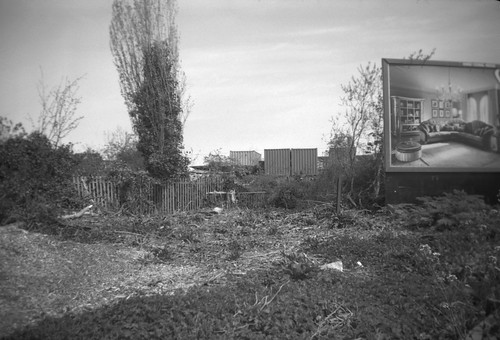 |
| Soho Cadet Model B with Fomapan 200 |
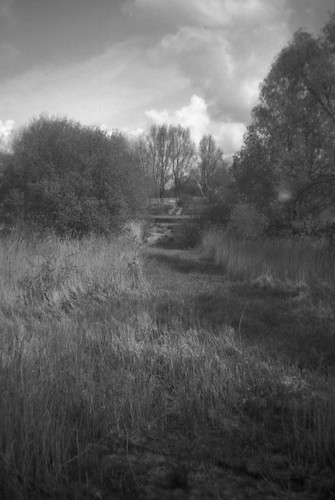 |
| Soho Cadet Model B with Fomapan 200 |
Sources/further reading
Soho Cadet on Early Photography
Soho Cadet on Red Bellows
Soho on Camera Wiki
Marriotworld's The Bakelite Story







some good information here, thanks. no-one else has any info re: aperture, shutter, focal length, etc. I saw one of these on ebay and wondered where to start, or whether to bother. I'm guessing something slow like Pan F 50 might work in reasonably bright sunlight.
ReplyDeleteThanks for your comment - the Soho Cadet isn't a bad point-and-shoot camera, although limited, but you can probably get a basic folding camera with some adjustable controls for around the same price or not much more; Pan F should work fine with bright sunlight, but less well in variable conditions.
DeleteI decided against the Cadet in the end - a Voigtlander Bessa can be bought for £20 or so, much more control over the image, and a much better lens
DeleteThanks, a very interesting and useful report. Few people actually seem to use these old cameras so it's great to see photos taken! I've decided against buying one so you've saved me a fiver at least :-)
ReplyDeleteAs commented on, there are many other cheaply available old cameras around which can take good photos. I've been amazed at the quality of the early Brownie Box cameras, which can produce fine sharp images even with colour film.
Iain
Thanks for your comments - I do like to test all the cameras which come through my hands as I write in the piece; the early Brownies with glass lenses, adjustable aperture settings and a large 6x9cm negative are pretty good for the cheap snapshot cameras that they were designed to be.
Delete